Kansas, Part 2 - Exploring the Salty, Wet, Seamy Underbelly of Kansas [240425-27]
In this post, we visit not one but two more of the "8 Wonders of Kansas" - both of which happen to be underground.
We had definitely reached the flatter part of Kansas in our drive to Hutchinson, and the high winds returned making the drive a less than pleasant one. We arrived at Strataca to an empty parking lot after 8 p.m., put up our shades, made dinner and then went to bed while the winds continued to buffet and rock the van throughout the night. When we peeked out of the blinds at 7:30 the next morning, we were surprised to find that there were a number of cars in the parking lot already (tours at Strataca didn't start until 9).
The displays we'd see on the tour later in the day would explain what we were seeing. The facility is a joint partnership between three companies. The Hutchinson Salt Company dug the original salt mine, and continues the mining operations today. Strataca operates the tours in an "older" part of the mine. And UV&S (Underground Vaults and Storage) runs a secure storage facility in the salt mines: it was their employees we saw arriving for work.
Our tour wasn't until 1 p.m. so we decided to go into town to do some grocery shopping, which required crossing the railroad tracks. As we approached the tracks, we noticed that the crossing arms were down and a rather long train (of mostly tanker cars) was going by. Christine eventually asked "does it look like they're slowing down?" and the answer was yes, yes they most certainly were - to a full and complete stop. This sort of thing must happen quite a bit in Hutchinson, because some of the locals immediately started turning their cars around and going the other way.
We slowly inched up in line as more and more cars bailed, and the train still didn't move. Pulling up the satellite view in Google Maps revealed that we could backtrack and do a couple mile wide detour via a railroad underpass, so we did that. By the time we got to the intersection that would've been on the other side of the track from where we were, we could see that the train still had not moved, so it looks like the detour was a good call.
We got back to Strataca in time to browse some of the displays in the lobby before the tour started.
We found this old newspaper article from the "preview tour" of the salt museum rather amusing. To give the locals an idea of exactly how deep the salt mine is, they compared the depth to the height of several well-known landmarks, including . . . the ADM Collingwood grain elevator (which, shockingly, Christine did not have on our travel itinerary).
We found this old newspaper article from the "preview tour" of the salt museum rather amusing. To give the locals an idea of exactly how deep the salt mine is, they compared the depth to the height of several well-known landmarks, including . . . the ADM Collingwood grain elevator (which, shockingly, Christine did not have on our travel itinerary).
Then it was time for the tour. After a brief safety video, we were loaded by groups onto the double-decker hoist (they explain the difference between a hoist and an elevator as "a hoist is intended for equipment, and an elevator is intended for people" - nice) - which is loaded one deck at a time - and then we descended 90 seconds in darkness down the 650 feet into the mine.
At the bottom we were led into the first large chamber, the Permian Room, which had displays describing the geology of the area and how it was formed by the Permian Sea 270 million years ago.
A 130 foot connecting "hallway" brought us to The Mining Gallery. The self-guided section was a wide circular loop with alcoves off the main hallway where there were videos and displays of old mining equipment showing how the wall of salt is first undercut, explosives are planted and detonated, and then the resulting salt hunks are hauled away and processed, and how the process (and the lives of the miners) has changed over the years.
Some of the machinery used in the mine is recycled farm equipment. This particular piece is near and dear to our hearts, since it was christened "Voyager" when refit for mine duty, complete with a "Warp Core" to power it.
The mine also gained some notoriety when it appeared on an episode of the Discovery Channel's "Dirty Jobs" show.
The other ride was the longer Dark Ride: an electric tram that goes deeper into the mine and is so named because for a portion they turn out the tram lights so that you can experience complete mine darkness.
On one portion they showed the "ribs" on the side of the room, each of which marked one round of undercut and blasting to advance the face of the mine forward.
...as well as under a patch of Red Salt - salt which contains iron potassium from a 275 million year old fossilized algae.
Various methods were used over the years to seal off old branches of the mine to conserve fresh air. One was to stack old dynamite boxes filled with salt into the openings to seal them off.
This truck started its life as a '32 Chevy truck, but was eventually stripped down, brought down, and refitted for mine duty - including having its engine replaced by an electric motor. Bringing new meaning to term "range anxiety": the truck ran at the end of a 300' extension cord. Legend has it that the miners also used to bet on how far the truck could coast if run at full speed until it pulled its own cord out - with the loser having to push the truck back (the record was 150').
These measuring devices were placed in the mine in 1958 by the Atomic Energy Commission to measure the rate of mine closure (which apparently is 1" every 500 years). They were interested in using salt mines as storage locations for nuclear waste. Luckily, no nuclear waste was ever stored in the Hutchinson mine.
Maybe the "best" part of the ride is where it stopped by a pile of salt, and we were allowed to pick up a bag of souvenir salt rocks to take home with us.The "Don't Be Late For Work" card probably explains the scene we had seen in the morning. In fact, due to unfortunate timing we were down in the mine for a half hour longer than we needed to be: signs at the ticket window (and announcements 5 minutes beforehand) warn that UV&S has exclusive use of the hoist between 3-3:45 p.m. for their shift change to get their employees up and down, and we were close but not quite done looking at all the displays at 3.
We suspected that a fair number of the bus loads of kids that were leaving the museum as we arrived got more of a kick out of the UV&S area than the rest of the mine, since they had a fair number of movie props and costumes on display.Thankfully they have wi-fi down in the museum (because, not surprisingly, cell signals don't reach 650 feet underground) so we were able to use the internet while waiting the half hour for the hoist to become available and we could see daylight again.
Leaving Hutchinson it was only a 15 minute drive up the road to our next accommodations: Sand Hill State Park.
-----
Our site at Sand Hill State Park was a full hookup site, so we were able to do our dump and fill "in place" in the morning. Our next door neighbor came by to chat while we worked, and while he was from South Carolina most recently he originally lived in San Jose and worked at Lockheed - small world!
Greensburg, where our next "Wonder of Kansas" was located, had "severe weather" forecasted starting at 2 p.m., so we headed out on the 2 hour drive a little before 10 a.m. Winds were quite fierce, and it was another white knuckle driving morning. Passing through the town of Arlington we saw this sign by the side of the road, which we thought was a great idea: designate a day where everyone tries to sell their neighbors their junk, and two days later they'll haul away anything they couldn't sell (or that they bought and realized they really didn't need either).
As we pulled in to the parking lot of the Big Well just before noon, we were relieved to see that the "severe weather" forecast had been pushed back to 4 p.m. - but then were slightly alarmed when the tornado warning alarm next to us gave off a single blast. Unsure exactly what to do, we scooted quickly into the Big Well lobby.
The nice lady at the desk seemed completely unconcerned by the alarm, so we bought entrance tickets and then inquired about the alarm. "Oh, that goes off every day at noon and one, to let the workers in the field know when the lunch hour is."
Despite its somewhat plain appearance from the outside, the Visitor Center is quite visually appealing on the inside. The ground level has 360 degree floor to high-ceiling displays circling a spiral staircase that goes up a floor to a 360 glass observation room that overlooks Greensburg, and down into the Big Well itself.
We were a little disappointed to find that the staircase only went about 2/3 of the way down the well. To descend the final third required the use a motorized harness, which was inexplicably locked.
The Big Well's claim to fame is that it is the "world's largest hand dug well". It started as a means to attract people to move to the new town in the 1880's with the promise of "free water" from a giant well that could supply an entire town, and was 109 feet deep and 32 feet in diameter. The town went through a short boom and bust cycle, and in 1933 the state of Kansas condemned all open wells so it couldn't be used as a primary water source at all any more - but it gained a second life 6 years later as a fairly successful tourist attraction, accumulating over 3 million logged visitors in their guest book by 2007.The story gets more interesting after that, and a full half of the displays cover what happened next. On May 4, 2007 a EF-5 super tornado ripped a 28.6 mile path of destruction across a part of Kansas, destroying pretty much all of Greensburg. In the upper left of the photo below you can see one of the three structures that remained standing after the tornado: the grain elevator.
The people of the city decided to not only rebuild, but to rebuild from the ground up as a "green" city with all municipal buildings built to LEED platinum standards, green home and business certification, and renewable energy as the community power source.
The museum also has (one of) the world's largest pallasite meteorite (in case you were wondering: according to Wikipedia a 1,430 lb. one was found in 2005, but is in a private collection in Texas).
On the way out of the museum, the lady at the desk gave us a couple of free souvenirs. We guess this is what happens to all the coins that are dredged out of wishing wells in too poor condition to be put back into circulation. 😉
On the way out of the museum, the lady at the desk gave us a couple of free souvenirs. We guess this is what happens to all the coins that are dredged out of wishing wells in too poor condition to be put back into circulation. 😉
Outside, we found real proof of this being a "green city". Of all the times to not be driving our Prius Plug-in. 😛 (One of the displays in the museum had mentioned that their wind farm generates more than the city needs, so the rest is put back into the state's grid.)
-----
With "severe weather" still barreling towards Greensburg, we decided to defy conventional wisdom and "get the heck into Dodge", driving 45 minutes westward to Dodge City. We decided to explore the historic area built around the location of the old Boot Hill Cemetery (so named for all the folks buried there who "died with their boots on" - i.e. suddenly, and usually in some untimely and violent fashion).We decided to pass on the actual Boot Hill Museum, partly because the re-creation of an Old West town we could see through the fence looked a little cheesy when compared to strolling through a real Old West Town like Columbia State Park...
...and partly because all the live entertainment provided by "historical interpreters" (gunfights, singers in the saloon, Can-Can girls, etc.) is only available during the summer months.
Instead, we opted to pick up a pamphlet from the (closed on a Saturday - when do they think people will be visiting?) Visitor Center for the self-guided walking tour of the three square block historic district. The pamphlet pointed out locations of historical interest, as well as the locations of the numerous statues, "Dodge City Trail of Fame Medallions", handprint/signatures, and pole art banners that were supposed to be sprinkled around the historic area. Unfortunately, several of the streets were torn up for construction and we suspect a lot of the items that were supposed to be there were removed in preparation of that, since we found less than half of the items specified. Along the way, Christine got to climb onto a genuine steam engine...
...and play poker with John Henry "Doc" Holliday.
Many of the items along the tour were Gunsmoke-centric, like this statue of James Arness playing Marshal Matt Dillon. But neither of us are quite old enough to have been fans of that old T.V. show, so the items didn't have quite the nostalgic draw for us as the probably did for most visitors.
One handprint/signature medallion we intentionally hunted down was Bruce Boxleitner's. While we've never seen any of his work in westerns, we were fans of Scarecrow and Mrs. King, Tron, and Babylon 5. And for a few years he was married to Melissa Gilbert, who played Laura Ingalls in the old Little House on the Prairie T.V. series, so if you're playing "Six Degrees of Laura Ingalls Wilder" you can get from Boxleitner to Wilder in two steps. 😜
And then there was La Salsa Man. We regret not having taken a photo of La Salsa Man with one of us underneath him since you can't quite get a feeling for his size from this photo, but he's 26 feet tall. He apparently was commissioned by Dennis Hopper (the late actor), who was born in Dodge City.
We spent the night in the Dodge City Walmart parking lot (Wallydocking experience #3). While we were doing dishes, a huge Class A motorhome towing a Camaro on a trailer pulled up right next to us, and a short while later the woman driving it came by to apologize for having parked so close. She was a full-timer from Manitoba, and offered some advice for our upcoming travels.









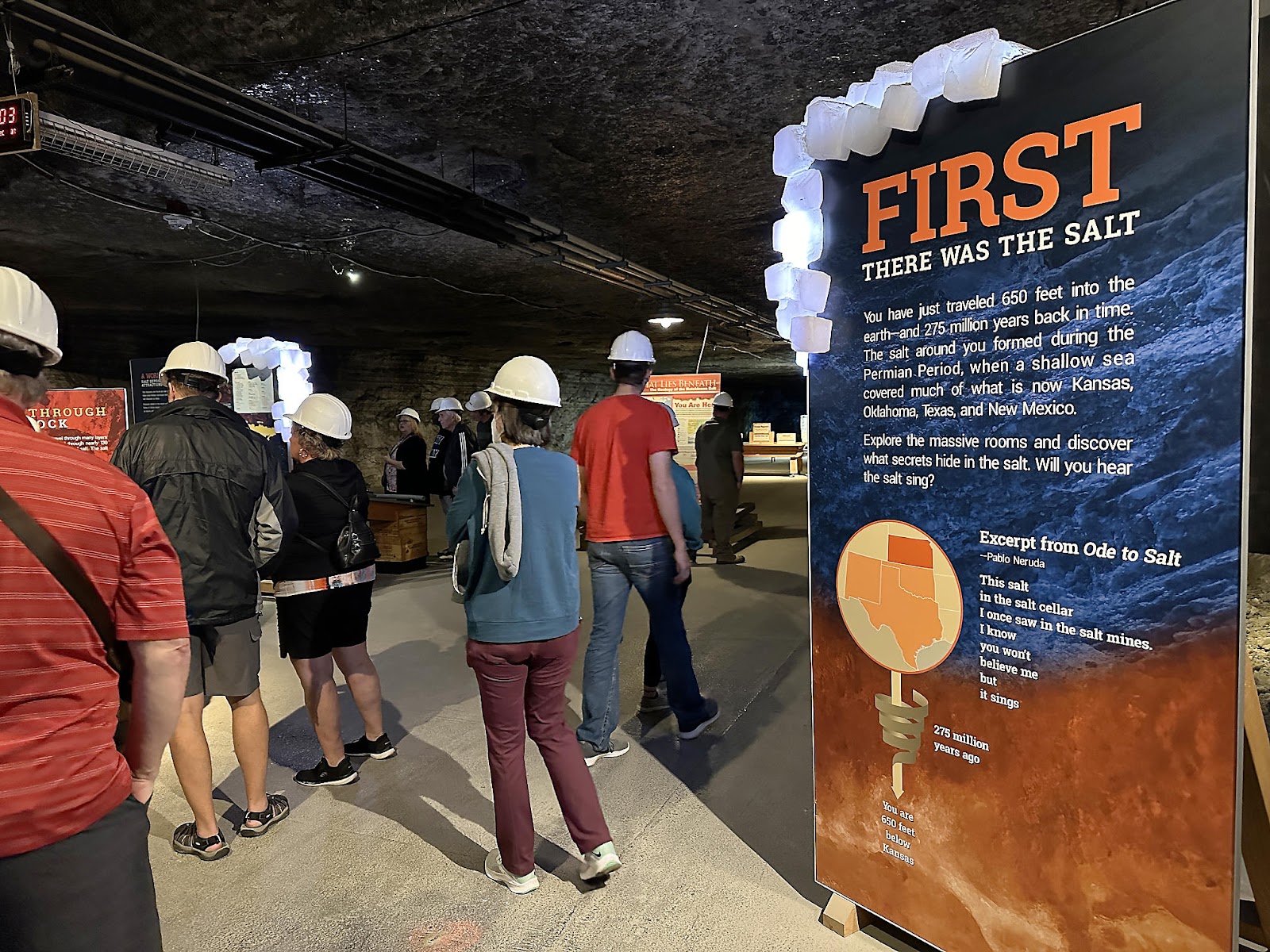


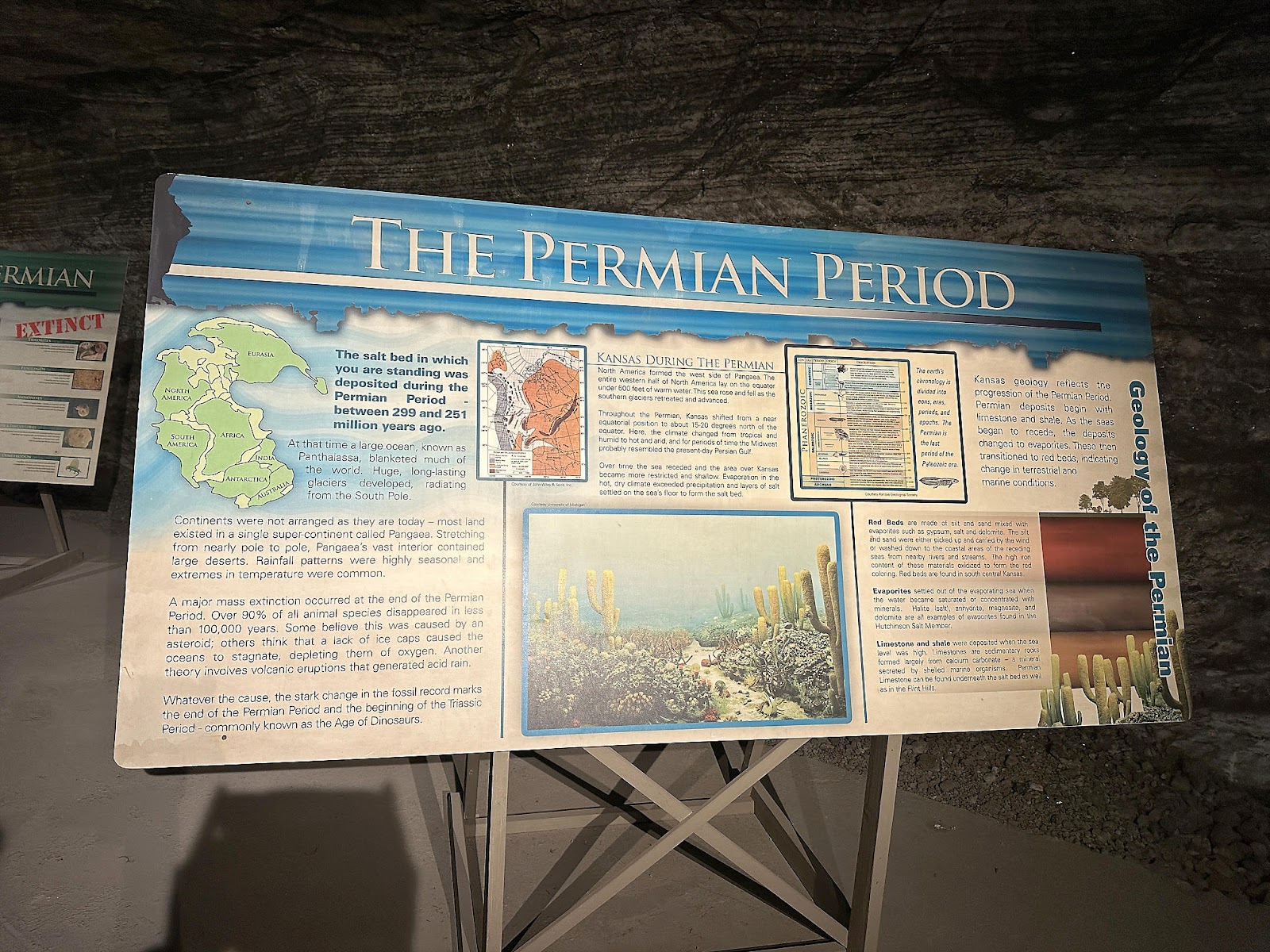

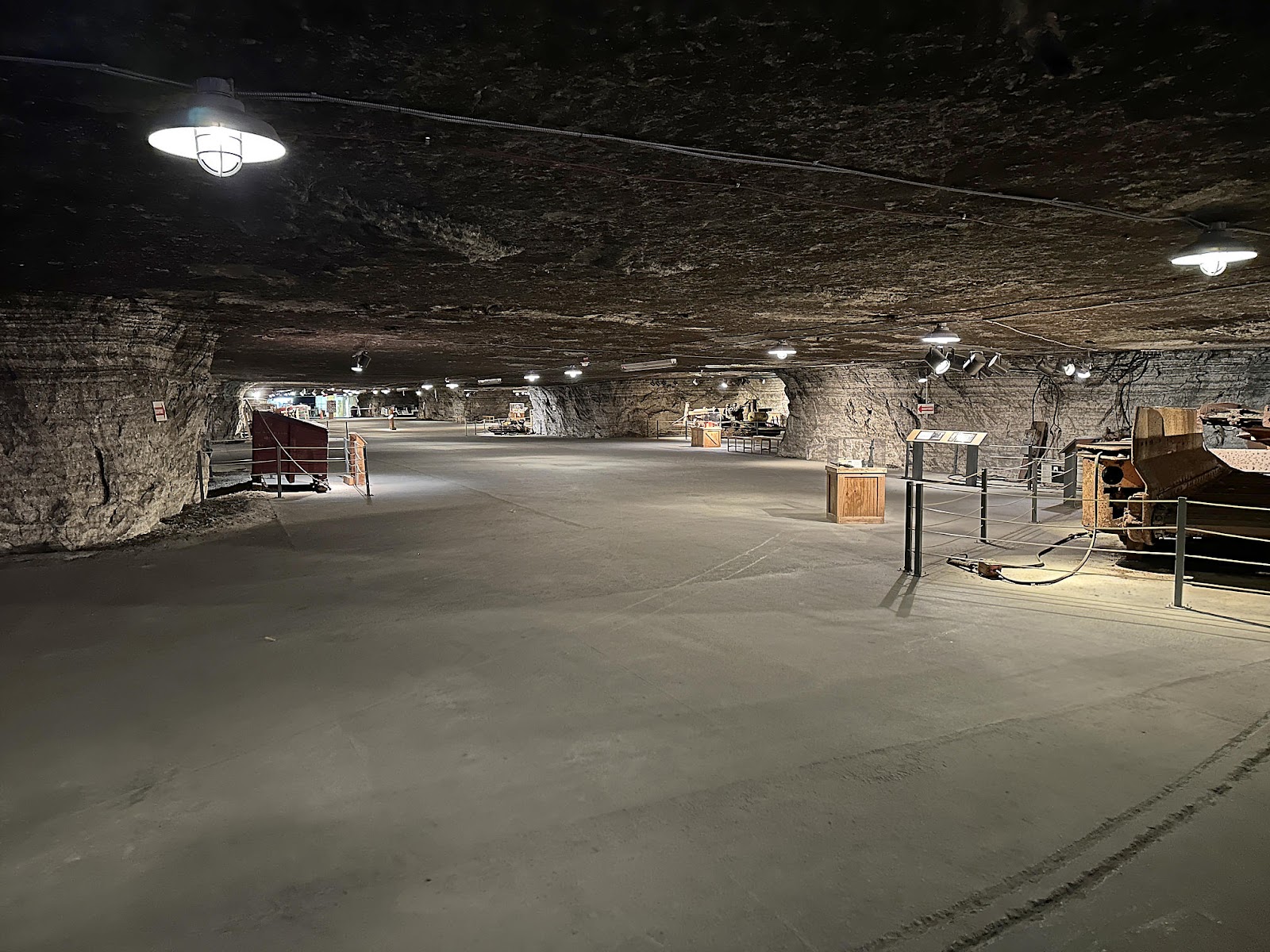














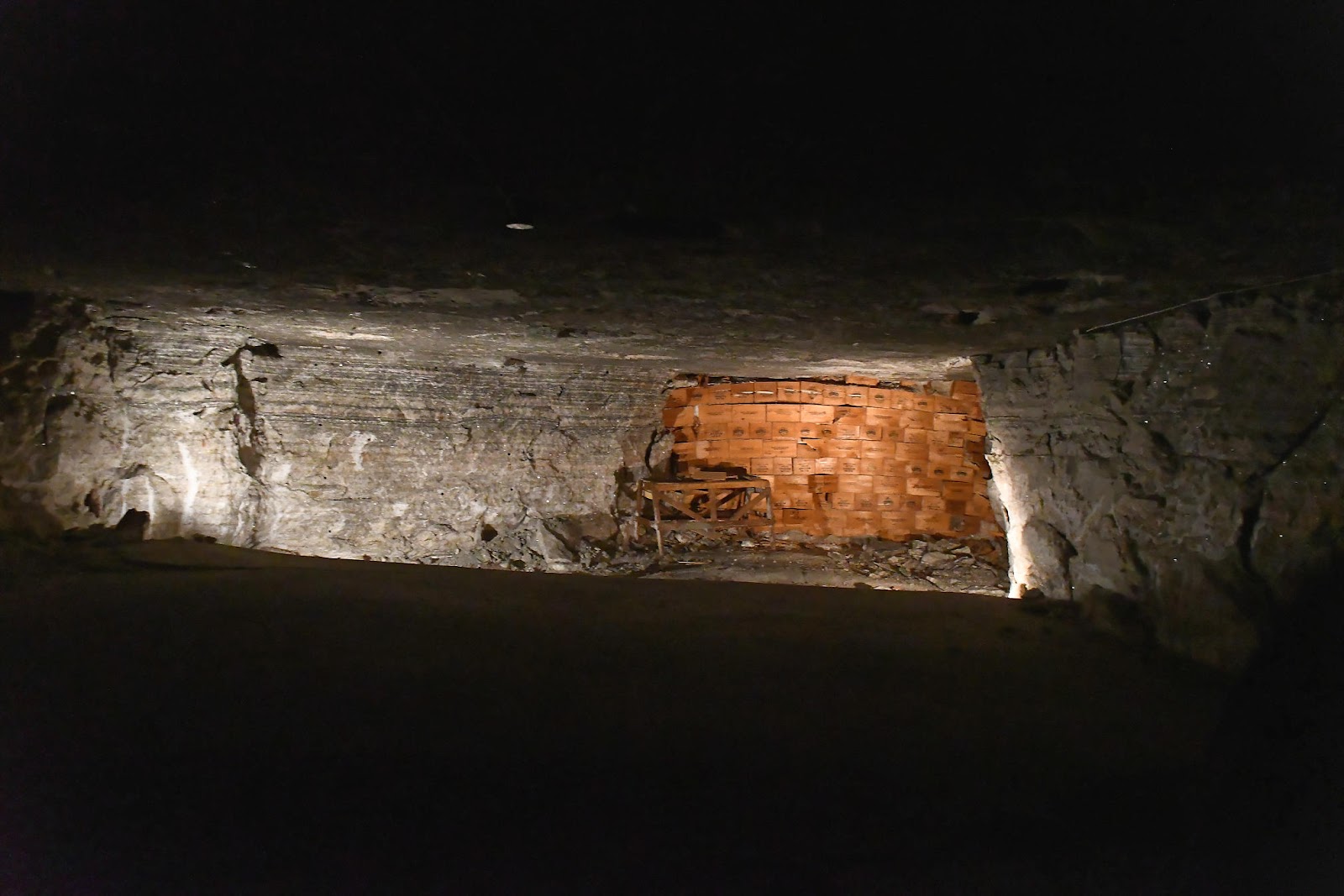
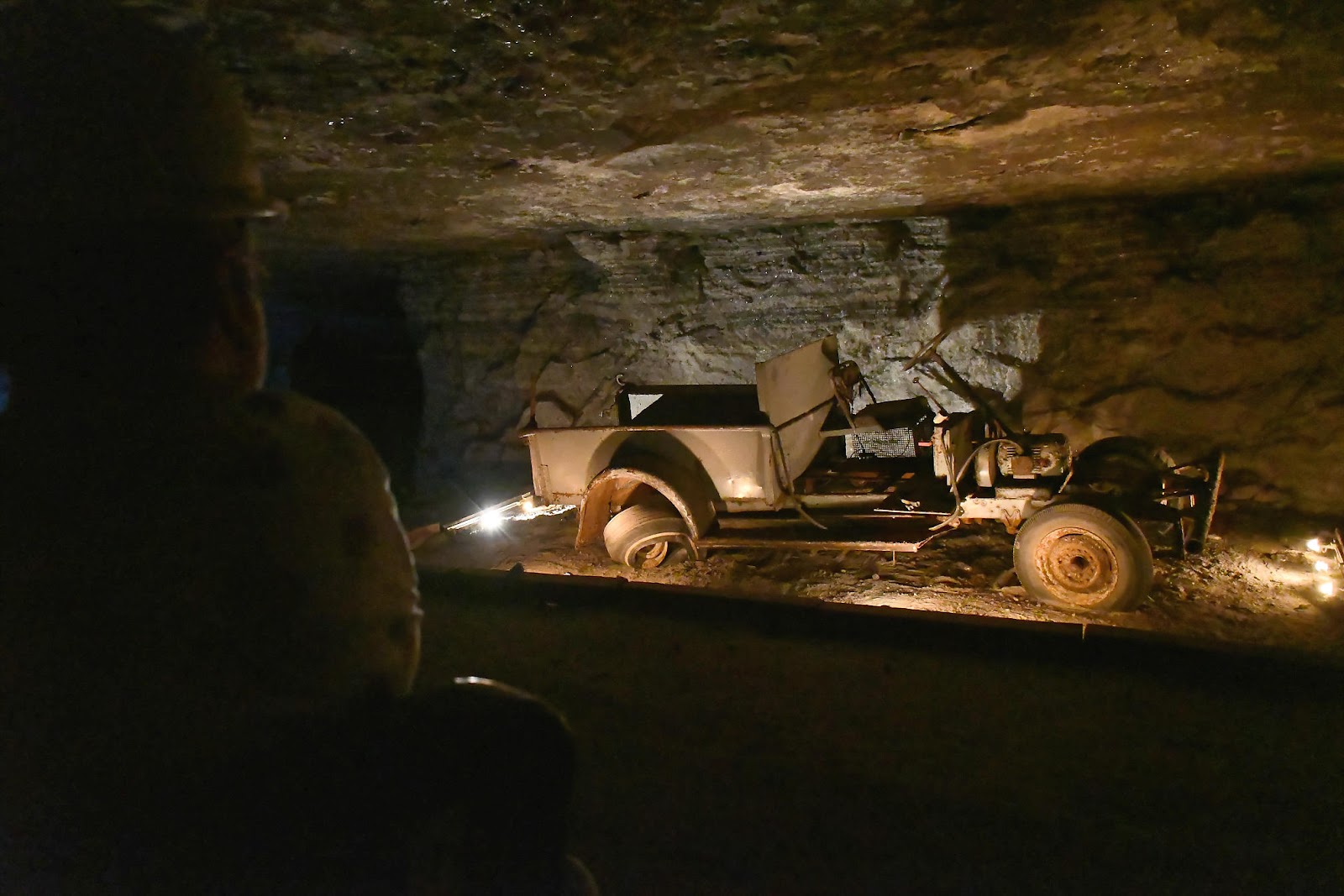

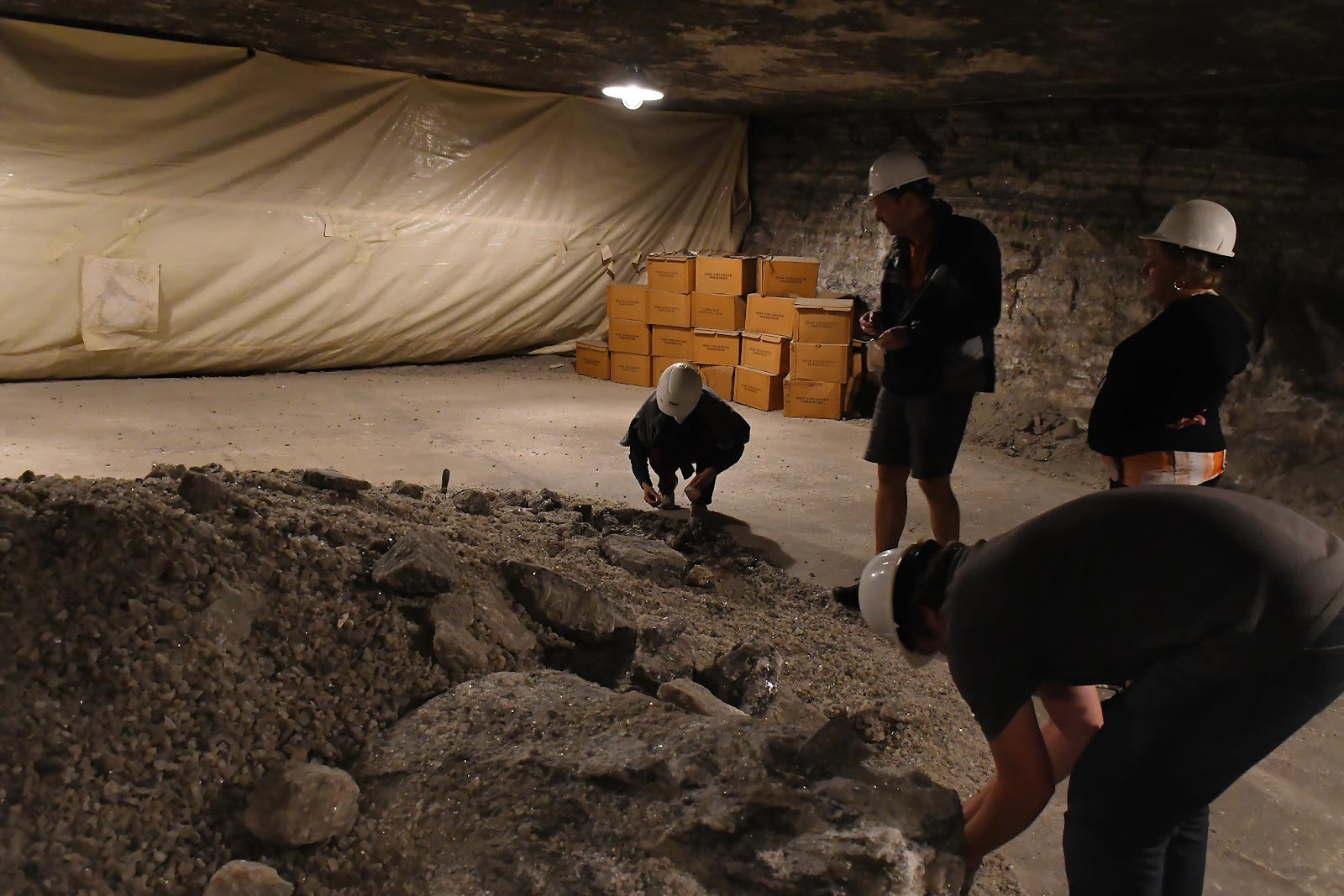

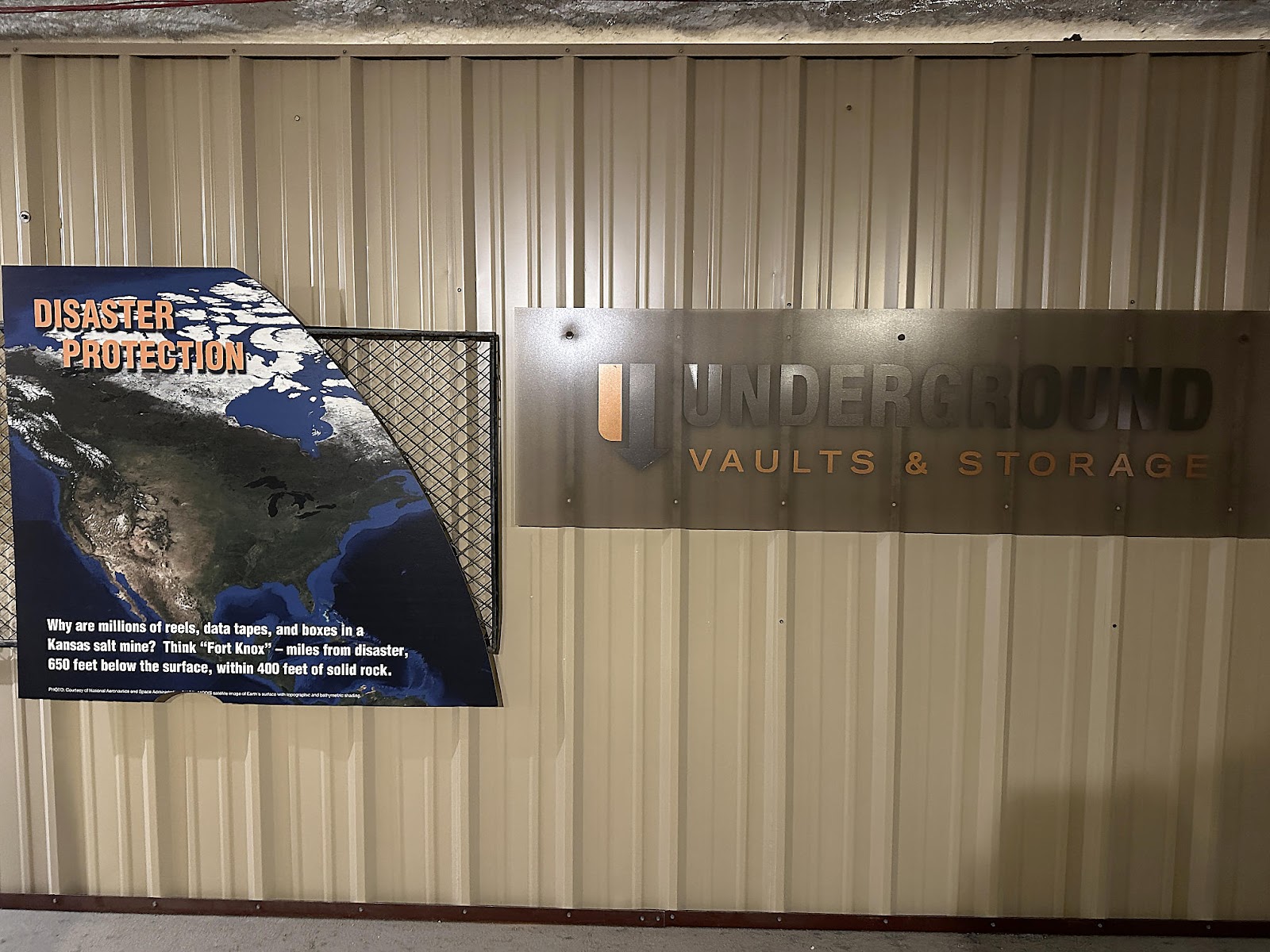



















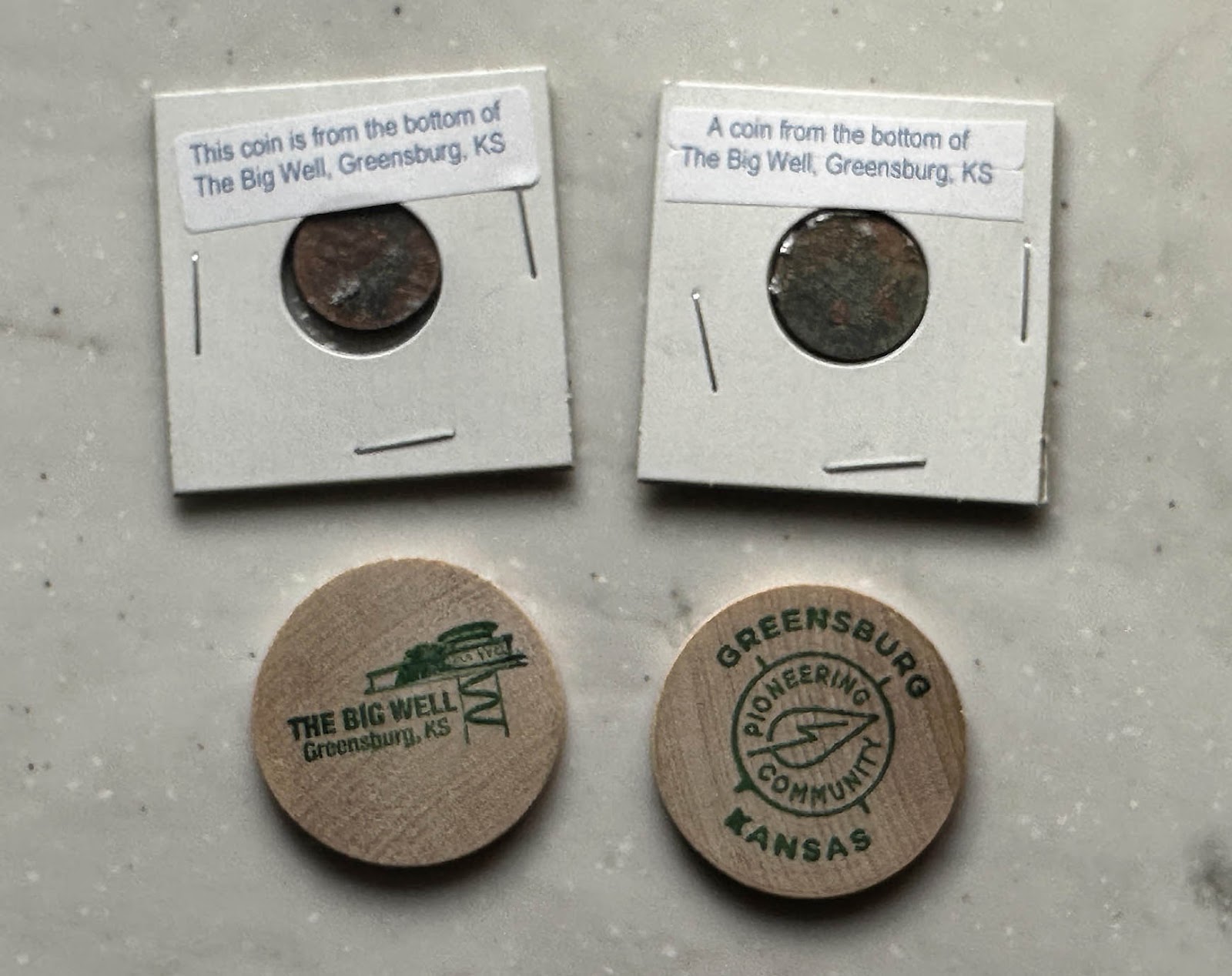
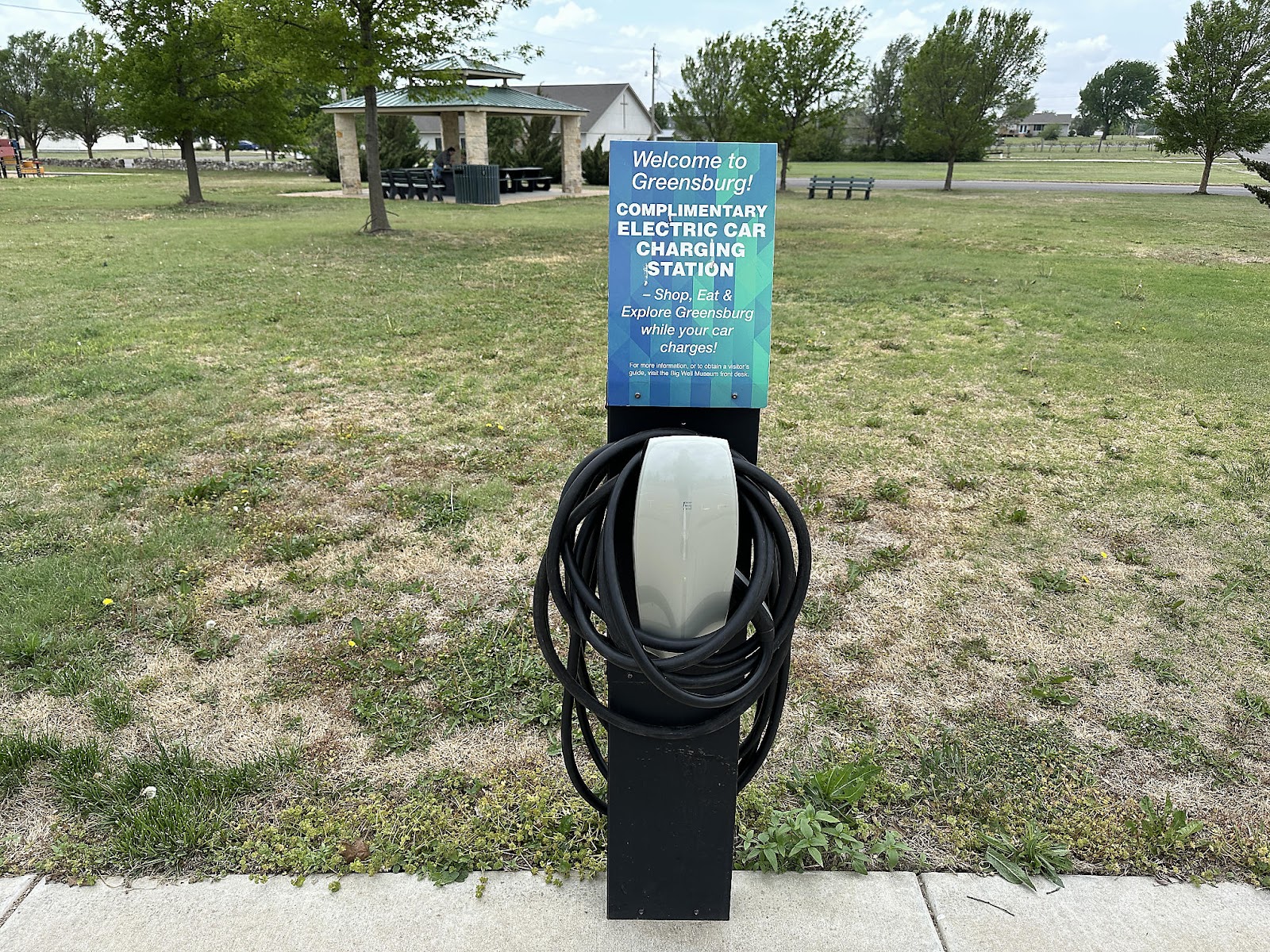



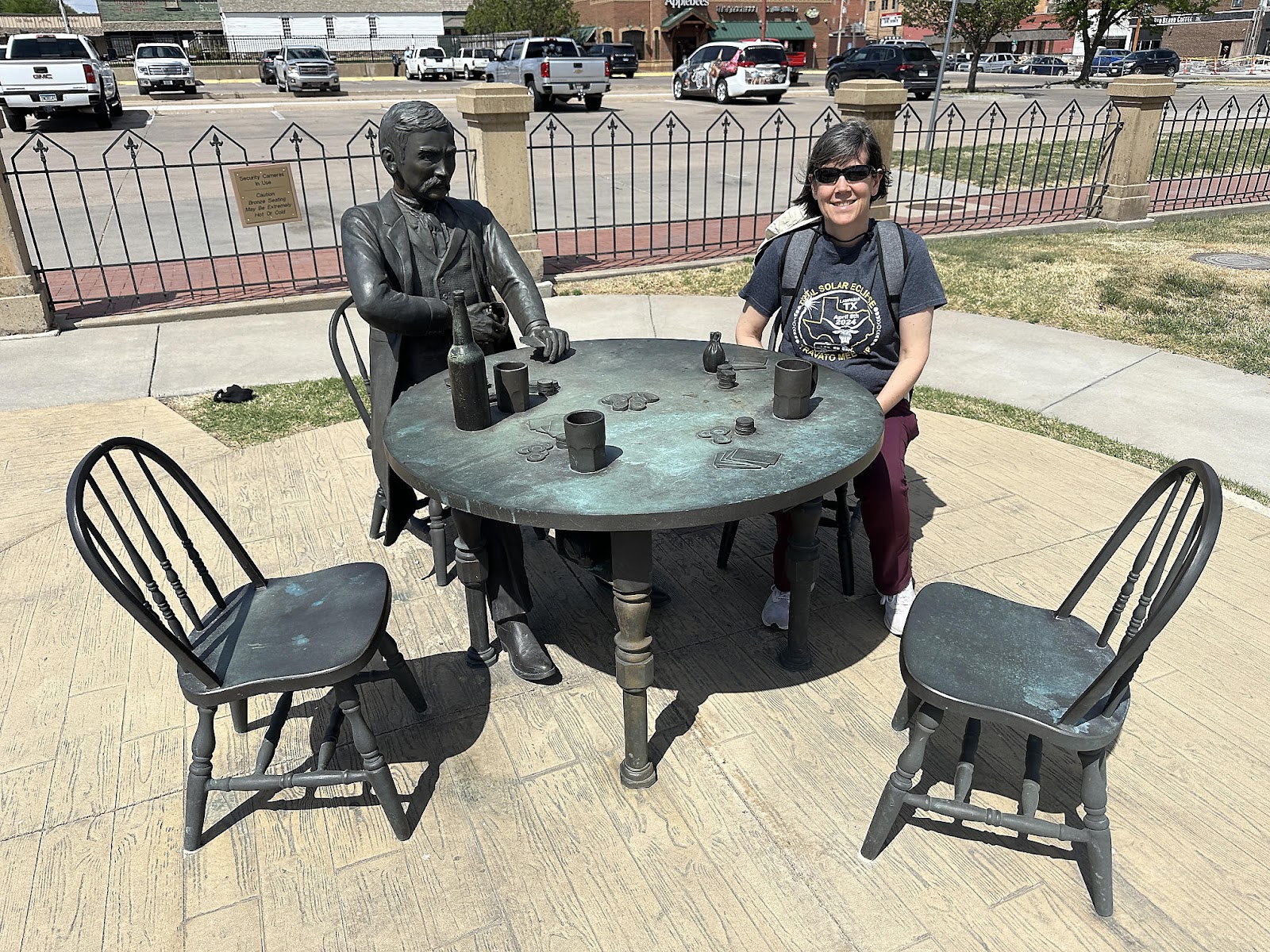










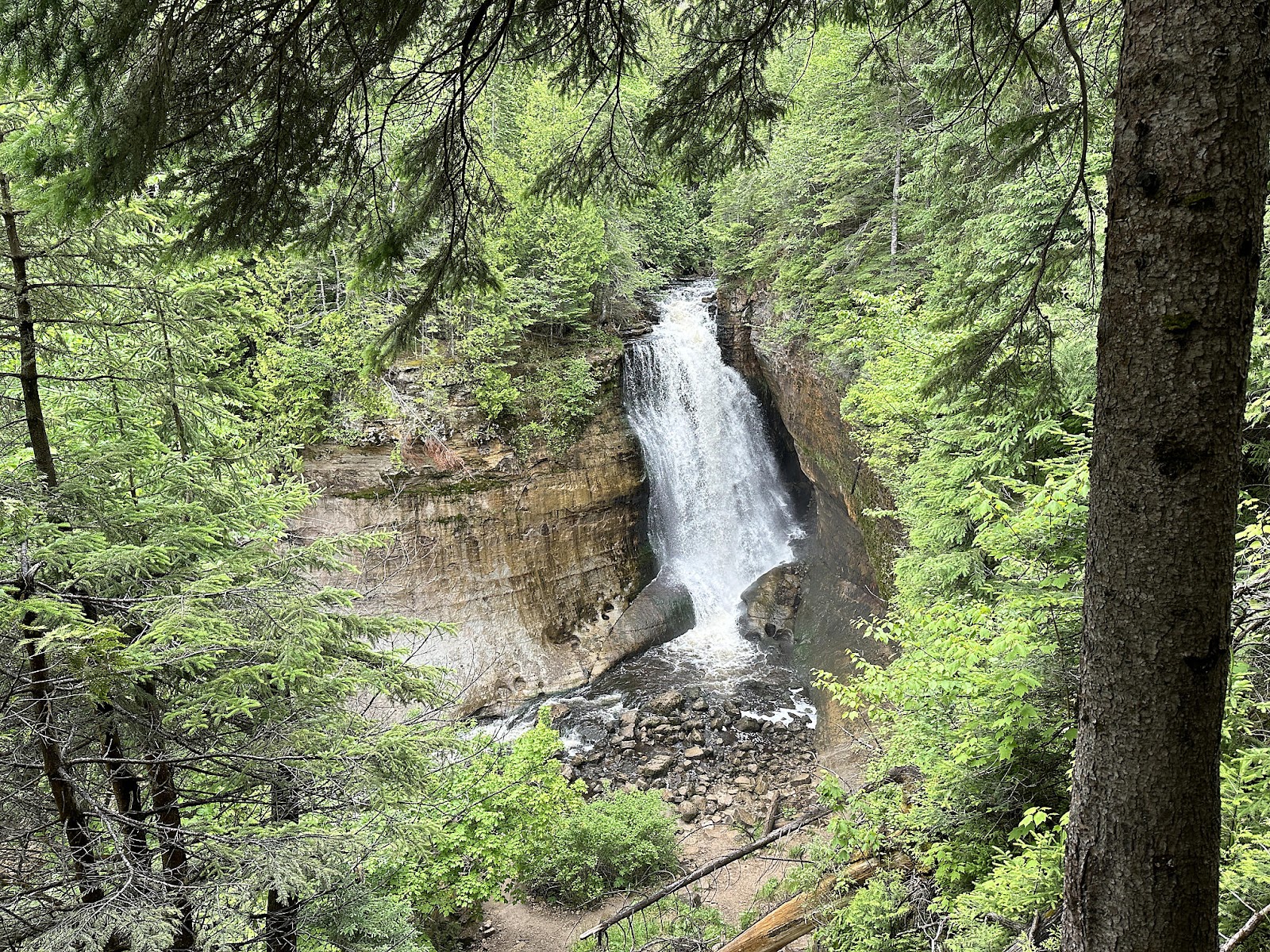
Comments
Post a Comment